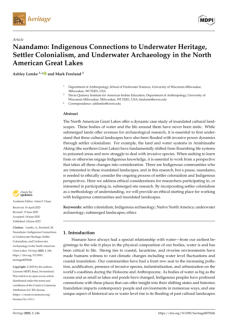Underwater archeology - Papers from 2022 to now






Authors:
James Hunter, Kieran Hosty
On Thursday 3 February 2022, the museum’s Director Kevin
Sumption PSM hosted a press conference in which he
stated that HMB Endeavour had been
found in Newport Harbor, Rhode Island, USA. This was the
culmination of more than two decades of research by the
museum and the Rhode Island Marine
Archaeology Project. The museum’s maritime archaeologists
Kieran Hosty and Dr James Hunter set out the evidence.

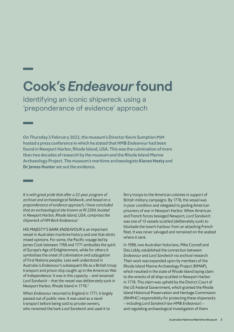

Authors: Kieran Hosty & James Hunter
In February 2022, the Australian National Maritime Museum
made two significant announcements relating to its
maritime archaeology program. The first was the statement
from the museum’s former Director and CEO, Kevin
Sumption, that the site of James Cook’s famous vessel, His
Majesty’s Bark Endeavour, had been positively identified
following a 22-year program of fieldwork and research in
Newport Harbor, Rhode Island.
The second major announcement was the launch of an
innovative new web experience by The Hon Paul Fletcher
MP, Minister for Communications, Urban Infrastructure,
Cities and the Arts.

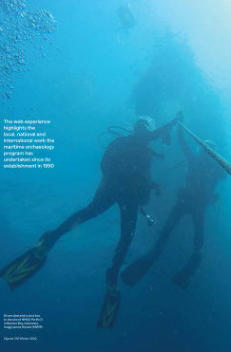

Authors: Andrew Viduka and Grant Luckman
This article briefly outlines underwater cultural heritage
artifact management in Australia from an unregulated
collecting environment in the 1940s – 1960s to the
increasingly regulated environment of the present. In 1993,
in conjunction with new legislation, an amnesty was
declared in order to inventory artifacts collected from now-
protected historic shipwrecks that were in private hands.
The amnesty period concluded with approximately 20,000
artifacts noticed at a time when information was being
stored in a range of formats and to different
standards

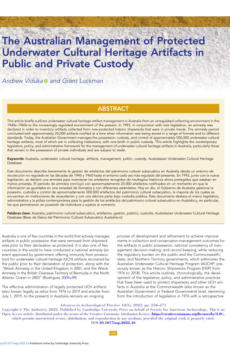

Authors:
David A. Plecher, Leonard Keil, Guy Kost, Max Fiederling,
Christian Eichhorn, and Gudrun Klinker
Virtual Reality (VR) technology is becoming an increasingly
helpful tool for entertainment and education. Its potential to
simulate hard-to-reach environments and emulate unique
experiences believably is of great interest for the scientific
study of Underwater Cultural Heritage (UCH), particularly
for the simulation of real-world dives. Virtual Reality enriched
with techniques from immersive Serious Games (SG)
provides an authentic way to enjoy Underwater Cultural
Heritage (UCH). This paper focuses on exploring the wreck
of a Roman merchant ship from the 5th century AD, which
was found near Veliki Piruzi (Croatia).



Authors:
Rachel D. Moseley, Justyna J. Hampel, Rachel L. Mugge and
Leila J. Hamdan
The objective of this work was to investigate how historic
wooden-hulled shipwrecks impact the dispersal of wood-
colonizing microbial Biofilms. The study addressed how
proximity to wooden shipwrecks shapes diversity, richness,
and community composition in the surrounding
environment. Study sites included two historic shipwrecks in
the northern Gulf of Mexico identified as wooden-hulled
sailing vessels dating back to the late 19th century.

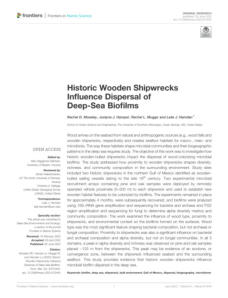

Authors:
Tomas Fernandez-Montblanc, Manuel Bethencourt, and
Alfredo Izquierdo
This paper presents a novel Underwater Cultural Heritage
(HCH) risk assessment methodology to quantitatively assess
the impact of wave-induced hazards on UCH in coastal
environments at a local level and the screening of UCH sites
at risk. The UCH risk is calculated as a function of
vulnerability (depending on archaeological materials, slope,
and seabed type), hazard (decontextualization, scouring,
and erosive wear), and exposure, computed for the UCH
sites registered in an archaeological database.

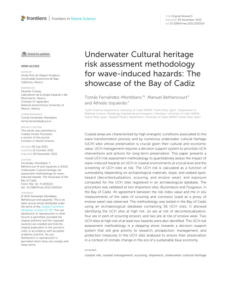

Authors:
David A. Plecher, Leonard Keil, Guy Kost, Max Fiederling,
Christian Eichhorn, and Gudrun Klinker
Virtual Reality (VR) enriched with techniques from
immersive Serious Games (SG) provides an authentic way
to enjoy Underwater Cultural Heritage (UCH) and the sport
of diving from the comfort of the user ’ s home or as a
museum exhibit. This paper focuses on the exploration of
the wreck of a Roman merchant ship from the 5th century
AD, which was found near Veliki Piruzi (Croatia).



Author: Xianglong Chen
This paper presents an overview of the history of the
radiocarbon dating technique and its significant
applications in Chinese archeology, focusing on the
transition from B-decay counting to accelerator mass
spectrometry.

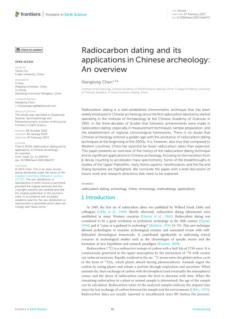

Authors:
David A. Plecher, Leonard Keil, Guy Kost, Max Fiederling,
Christian Eichhorn, and Gudrun Klinker
In this paper, we are focusing on the exploration of the
wreck of a Roman merchant ship from the 5th century AD,
which was found near Veliki Piruzi (Croatia). The images
taken by the underwater archaeologists enable a 3D
reconstruction of the excavation site. The modular structure
of the application makes it very easy to transfer the
techniques presented to other excavation sites, including
information and objects.

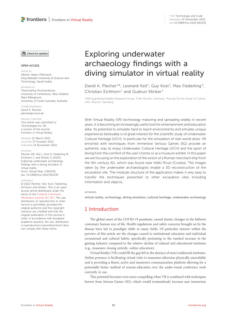

Authors: Tomas Fernandez-Montblanc, Manuel
Bethencourt, and Alfredo Izquierdo
Coastal areas are characterized by high-energy conditions
associated to the wave transformation process and by
numerous underwater cultural heritage (UCH) sites whose
preservation is crucial, given their cultural and economic
value. UCH management requires a decision support
system to prioritize interventions and actions for the long-
term preservation. This paper presents a novel UCH risk
assessment methodology to quantitatively assess the impact
of wave-induced hazards on UCH in coastal environments
at a local level and the screening of UCH sites at risk.

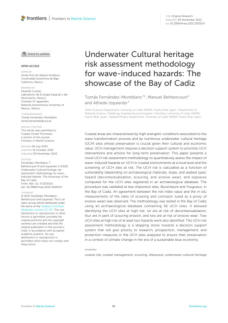

Author: Jean-Pierre Féral
Occupational Scientific Diving is science-led diving that is
needed to support professional research and education and
for the protection, conservation, and monitoring of the
natural and cultural heritage environment.
It is not recreational or commercial diving.
Scientific Diving exists in a health and safety framework that
involves certified scientific divers, diving officers, hyperbaric
physicians, scientific project leaders, heads of laboratories,
administrators, and legislators.



Publisher: National Aeronautics and Space
Administration (NASA) - USA
The purpose of these Scientific Diving Standards is to ensure
that all scientific diving is conducted in a manner that will
maximize rotection of scientific divers from accidental injury
and/or illness, and to set forth standards for training and
certification that will allow for working reciprocity between
scientific agencies. Fulfillment of these purposes shall be
consistent with the furtherance of research and safety.

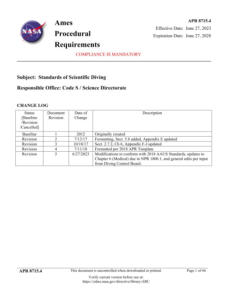

Author: William Gomez Pretel
Roncador Cay, located in the western Caribbean within
Colombia's maritime area, is notorious for its treacherous
waters that have caused numerous shipwrecks, including
the USS Kearsarge on February 2, 1894. Both the United
States and Colombia consider the wreck a crucial part of
underwater cultural heritage, even though its precise
location remains unknown. This study aims to determine the
location of the wreck by utilizing diverse data and mapping
tools, while also examining the environmental and cultural
aspects of the area.

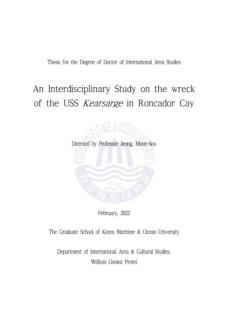

Authors: Jan Majcher
This paper investigates how sediment and water movement
affect the preservation of historic underwater wreck sites.
Multibeam echosounder (MBES) data from ten metal
shipwrecks in the Irish Sea, at depths ranging from 26 to 84
metres, was used alongside data from seabed samples,
shallow seismic surveys, and an oceanographic model. The
authors combined these data types in three studies to
achieve their research objectives.

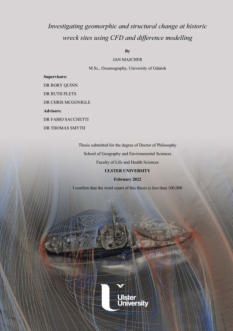

Authors: Evangelia Tzavela, Anastasia Pournou
In September 2020, researchers discovered 50 coal cubes at
a Roman shipwreck near Kasos, Greece. They examined the
materials and conditions of the cubes to determine how to
preserve them and learn more about their origin and usage.

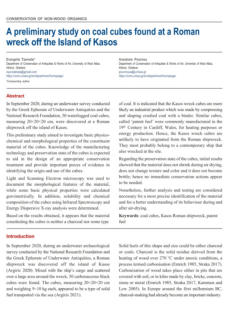

Authors: William Gomez Pretel, Andres Carvajal Diaz, and
Moonsoo Jeong
This study should be linked to the document titled “An
Interdisciplinary Study on the Wreck of the USS Kearsarge in
Roncador Cay” by the same author.



Author: Marco Milanese
The paper discusses the significance of studying shipwrecks
from the post-Middle Ages, particularly when accompanied
by old records. It sheds light on the tin-glazed tableware
production in Montelupo, near Florence. The Mortella II
shipwreck serves as a valuable example because
pinpointing the sinking date helps to revise the timeline for
the production of specific ceramics. The popularity of
Montelupo ceramics across Europe, the Americas, and
Africa highlights the global impact of updating their
historical narrative on archaeological research.



Authors: Curt D. Peterson, Scott Williams, & Craig Andes
This article discusses how rocks covering old shipwrecks
help to determine when and where rockslides happen on
underwater cliffs and hills. Based on what happens during
big winter storms, it also examines how remains from
wrecks may be transported around headlands and
ultimately end up in coves.

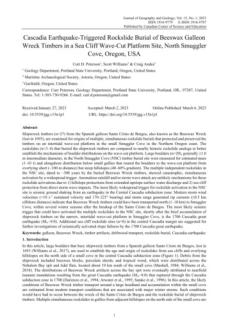

Authors: Mihkel Tammet, Priit Lätti, Raija Katarina Heikkilä
During the construction of an office building in Tallinn in
the spring and early summer of 2022, workers discovered a
medieval shipwreck that measures 24.5 meters in length
and 9 meters in width, making it one of the largest of its
kind ever discovered in Northern Europe. Believed to be a
cargo ship from the mid-14th century, the wreck contained
numerous artifacts and ecofacts, making it highly valuable
for scientific research.

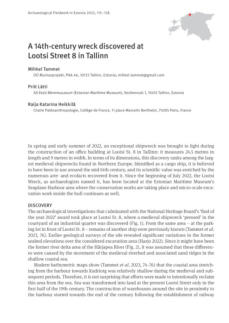

Authors: Simon Brown, & Jon C. Henderson
This paper explains the survey and monitoring of the SS
Thistlegorm wreck in the Red Sea using digital
photogrammetry.
This proves that digital photogrammetry provides an
affordable and straightforward method that meets
professional standards,enabling non-experts to gather data
using a basic camera setup and standard software.




Click on the
octopus to return to
the top of the page

Authors: William Gomez Pretel
This study focused on estimating the location of the USS
Kearsarge wreck site at Roncador Cay, within Colombia's
maritime territory, combining qualitative and quantitative
data to understand the environmental and socio-cultural
context of the shipwreck. It also addressed the limitations of
geographical isolation, ambiguous information, and legal
confidentiality. In addition, the research aimed to contribute
to international cooperation and capacity building among
maritime researchers, emphasizing the importance of
interdisciplinary research and fieldwork in the identification
and protection of underwater cultural heritage.



Author: Ivar Treffner
This thesis focused on a well-preserved flute wreck found in
the Gulf of Finland. It provides historical context about the
significance of the Baltic Sea for trade, the importance of the
Dutch flute ship, and the role of maritime archaeology in
understanding these historical artifacts. It also details the
author's involvement in the research and fieldwork related
to the wreck and sets forth the main goals of the thesis,
which include analyzing the wreck in relation to current
knowledge, offering explanations for new findings,
addressing challenges in deep-water archaeology, and
providing a written account for future research.

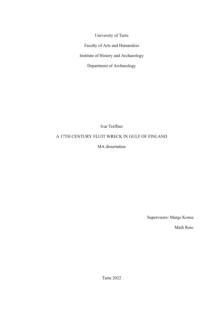

Authors: MTD Wingate, Y Lu, IOH Fielding, R Maas, RH
Smithies and SEM Gain)
This geological analysis aims to determine the origin of
ballast stones recovered from a shipwreck, possibly the Trial,
which sank off the northwest coast of Western Australia in
1622. The analysis involves comparing the characteristics of
the ballast stones with sedimentary rocks from various
locations, particularly in southwestern England, to ascertain
their provenance. The study discusses geological and
isotopic data, including U-Pb geochronology and Sm-Nd
isotope results, to support the hypothesis that the ballast
stones likely originated from the Plymouth area or nearby
regions in southwestern England.



Authors:
Javier Prieto, Fabio Bruno, Antonio Lagudi, Michela Ricca,
Mauro Francesco La Russa, George Papatheodorou, and
Nikola Miškovic
The document intends to inform and highlight the
importance of underwater cultural heritage (UCH) and the
challenges associated with its documentation, preservation,
and dissemination. It emphasizes the field's interdisciplinary
nature, involving collaboration among experts from various
disciplines. It also introduces a special issue that presents
original research articles and technical notes on innovative
methodologies, applications, and technological solutions
related to underwater materials. Specific studies and projects
are mentioned to illustrate advancements and potential
benefits in this field.

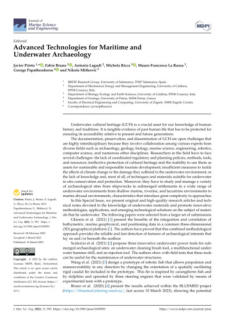

Author:
William Gomez Pretel, Moonsoo Jeong, Camilo Ernesto
Rodríguez-Gutiérrez, & Agustin Ortiz JR
This study examines the legal challenges of preserving
sunken military vessels as Underwater Cultural Heritage
(UCH) in Colombia. It addresses issues such as limited
international cooperation, lack of legal recognition under
domestic law, and the complexities of managing UCH. It
also focuses on specific cases like the USS Kearsarge and
analyzes legal frameworks in Colombia and the United
States. The ultimate goal is to highlight the need for a more
comprehensive legal framework and greater international
cooperation to preserve and protect these underwater
cultural assets.



Authors: Tilde de Caro, Fiammetta Susanna, Mauro
Francesco La Russa, & Andrea Macchia
This study analyzed the corrosion processes affecting nine
coins found in an underwater wreck. Various analytical
techniques, such as optical microscopy, micro-Raman
spectroscopy, X-ray diffractometry, and scanning electron
microscopy with energy-dispersive X-ray spectroscopy, were
employed to investigate the nature and microstructure of
the corrosion patina on the coins. That allowed the authors
to understand the complex corrosion processes and the role
of different chemical and physical parameters in the
degradation of bronze artifacts in underwater
environments.

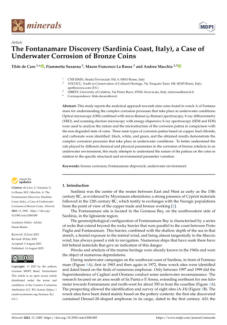

Authors:
Joseph Nnaemeka Chukwuma, Moses Onyemaechi Ede,
Ifeoma Salome Chukwuma, Eddy M. Izueke, Joy Nneka
Uchenye Ejikeme, Chinyere Isaac Madukwe, Christopher N.
Ibenwa, Nnadi Fabian Uzochukwu, Michael Chigozie
Anyaehie, Obiageli Kay Nkechi Omali, Christian Ikechukwu
Nnadi, Nnamdi Ugochukwu Ijeudo, David C. Ononogbu,
Omaka Kalu Ngele, Robert Nyakuwa, Andrew Nnabuchi
Ogbochie
This study investigated the impact of psychoeducational
coaching, specifically rational-emotive behavior therapy
(REBT), on improving workplace ethical perceptions and
reducing deviant behaviors among lecturers in archeology,
religion, and cultural studies. The document outlines the
study's methodology, results, and conclusions.

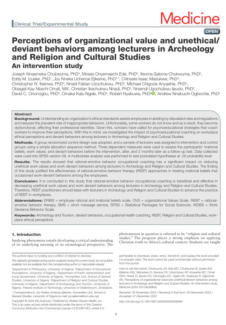

Authors:
Sven Bergmann, Matthias Brenner, Jennifer Susanne
Strehse, Tobias Hartwig Bünning, Edmund Maser, Philipp
Grassel, David Heuskin, David Brandt, Marco Berger, Simon
van der Wulp, Mathew Skellhorn, Polly Hill, Sven Van Haelst,
Maarten De Rijcke, Uwe Wichert
This document informs about research efforts within the EU
Interreg project North Sea Wrecks (NSW) and its
collaboration with the German Aerospace Centre and the
Institute for the Protection of Maritime Infrastructures (DLR)
to understand the environmental risks posed by shipwrecks
and dumped munitions in the North Sea and globally. The
document details the methodologies used, including
historical document analysis, visual inspections, and sample
analysis, to assess the status of wrecks,

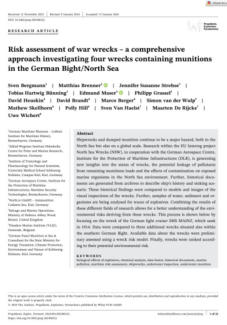

Authors:
JJan Majcher, Rory Quinn, Gert Normann Andersen, and
David Gregory
This paper provides an academic examination of the effects
of bottom trawling on shipwreck sites to conceptualize
them as process-response systems that reach a quasi-
equilibrium state over time and to analyze how bottom-
contact fishing gear disrupts this state. It discusses the
capabilities and limitations of modern geophysical methods
in detecting changes at underwater archaeological sites
caused by bottom trawling, highlights the challenges of
identifying disturbances on dynamic seabeds, and suggests
that detailed analysis of wreck distribution might serve as
indirect proxies for structural damage.

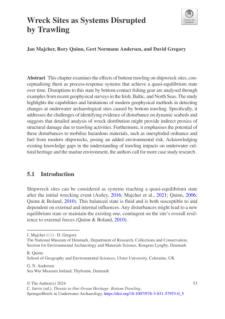

The Rebreather Forum 4 conference, held in April 2024,
aimed to address various aspects of rebreather diving,
including safety, physiology, technology, training, and
knowledge gaps. The primary objectives were to
consolidate and transfer knowledge and to promote best
practices within the diving community. Organized by
Michael Menduno, the program committee included John
Clarke, Simon Mitchell, Neal Pollock, and Frauke Tillmans.
The proceedings document contains thematic papers
presented at the forum, along with question-and-answer
exchanges and consensus discussions.

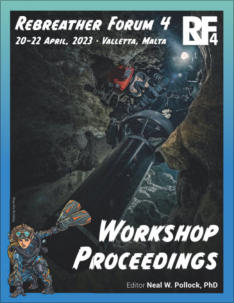

Authors:
Anna Gebruk, J Murray Roberts, Lea-Anne Henry, Arne
Biastoch, Tobias Schulzki, Maria Rakka, Beverly
McClenaghan, Mehrdad Hajibabaei, Steve W. Ross, Jasmine
Eggleton, Claire Cardy
This presentation provides a detailed overview of the
scientific research and objectives related to the study of the
Titanic wreck site. It outlines past research efforts, the
importance of studying the site's biology, and the specific
science objectives of a 2022 expedition to highlight the
significance of understanding deep-sea biodiversity, the
impacts of human debris, and the development of deep-sea
organisms over time.

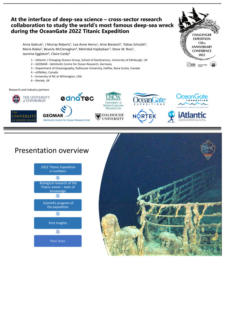

Authors: Min Tao, Liza Chang
This document is provided as information for people who
have not diving formation and are interrested by such
activities. It highlights the importance of understanding the
multidimensional aspects of scuba diving specialization, the
duties of instructors, and the limitations faced by
recreational scuba divers in China. It also seeks to identify
the qualities of an excellent instructor and the necessary
enhancements needed for their professional growth.



Authors: Neal W. Pollock
This text intends to inform and caution readers about the
complexities and risks associated with using closed-circuit
rebreathers in diving compared to open-circuit systems. It
highlights the advantages of rebreathers, such as
expanding the diving range, while emphasizing the
increased complexity and potential hazards involved. The
text also highlights the importance of proper training,
monitoring, and ongoing commitment to safety practices
for users of rebreathers.

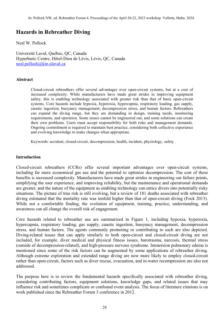

Authors: Kinga Korniejenko, and Bartosz Kontny
This paper analyzes the use of virtual and augmented reality
(VR and AR) technologies in the field of underwater
archaeology. It reviews current applications, discusses the
development and creation process of VR and AR
applications for this purpose, highlights areas of application
and barriers, and provides a discussion based on case
studies. It concludes with a summary and exploration of
future possibilities for these technologies in underwater
archaeology.

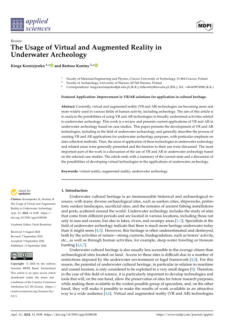

Authors: Ashley Lemke
This document aims to inform about the field of
anthropological archaeology underwater. It explains what
this type of research involves, how it differs from traditional
archaeology, and the unique insights it provides into
ancient human behavior through advanced technologies
and the preservation capabilities of underwater
environments. It also intends to introduce the reader to the
scope of this field, including the exploration of submerged
sites and the methodologies used to study them.

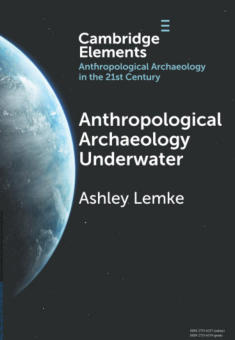

Authors: Alain Foret
This document explains the initial Haldane model and its
limitations in managing decompression during repetitive
dives. It discusses historical and modern approaches to
addressing these limitations, including the evolution from
the original Haldane tables to the Repetitive Group (RG)
method and the challenges faced with the advent of dive
computers.

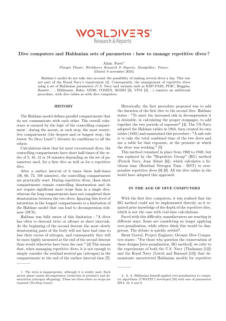

Authors:
Carlotta Sacco Perasso, Federica Antonelli, Barbara Calcinai,
Edoardo Casoli, Maria Flavia Gravina, and Sandra Ricci
Bioerosion is the breakdown of hard surfaces caused by
living organisms, important for coastal ecosystems. Many
species can damage these surfaces, contributing to
sediment production. Most studies focus on tropical areas,
especially coral reefs. This review looks at bioerosion of
archaeological artifacts in the Mediterranean, detailing
affected sites, organisms involved, and conservation
strategies.



Authors:
Kaixuan Ma, Yu Wang, Xinyu Yang, Cen Wang, Yeqing Han,
Xinduo Huang, Peifeng Guo, Jing Du, Yue Chen, and
Jiao Pan
After the recovery of the Nanhai No. 1 Ancient Shipwreck in
2007, it is now exposed to air. Airborne microorganisms
settle on wooden shipwrecks, leading to damage. A survey
was conducted on these microorganisms at the site.
Different microbial communities were found over time, with
Acinetobacter being dominant in 2020, which can degrade
wood. This study offers important data for the ship's future
conservation.

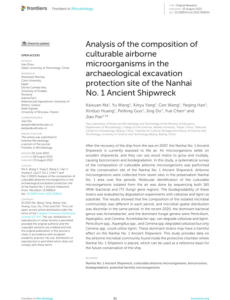

Authors: Daniel Berger, Kai Kaniuth, Gerhard Brügmann,
and Ernst Pernicka
Tin was essential in prehistory for making bronze, and
understanding its origins helps reveal trade networks and
cultural ties. However, many questions about where tin
came from remain. A recent study analyzed tin ingots from
the Uluburun shipwreck, important for Late Bronze Age
trade. It suggested that the tin came from Central Asia and
Anatolia. However, this article argues that the study's
conclusions may not be supported and highlights similarities
with tin ingots from Israel and Britain, suggesting southwest
England or possibly Afghanistan as potential sources.

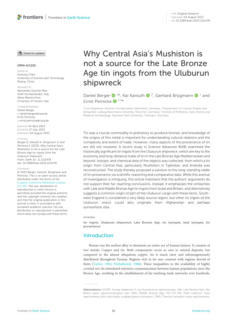

Authors: Charlotte Papillaud Looram, and Jade Lindley
Underwater cultural heritage on the high seas is difficult to
police by any single state, making shipwrecks vulnerable to
theft and illegal sales. The United Nations High Seas Treaty
aims to protect these valuable sites. Shipwreck ownership
can also be disputed in a state's exclusive economic zone,
complicating protection efforts. The article uses the
Geldermalsen shipwreck example to explore how
international law and technology can help prevent these
crimes.

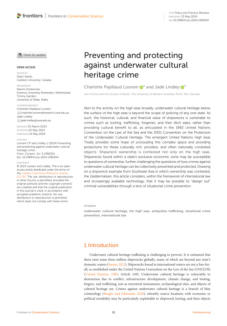

Authors:
Yu Wang, Yeqing Han, Naisheng Li, Cen Wang, aixuan Ma,
Xinduo Huang, Jing Du, Hong Guo, and Jiao Pan
The Nanhai No. 1 shipwreck, an ancient ship from the
Southern Song Dynasty, faces issues from microbial diseases
on its hull wood. This study collected microbial samples to
analyze these diseases and found Fusarium solani NK-NH1
as the main fungus, capable of degrading cellulose and
lignin. The research offers insights for preserving the
shipwreck.

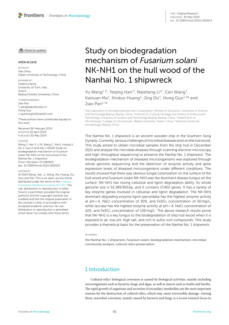

Authors: Lucas C. F. Domingos, Paulo E. Santos, Phillip S. M.
Skelton, Russell S. A. Brinkworth, and Karl Sammu
This paper provides an overview of deep-learning methods
for automatic object classification of underwater sonar data
for shoreline surveillance. It focuses on vessel classification
and object identification from active sonar. The authors
identify five main ingredients in its development:
convolutional layers, biologically inspired feature-extraction
filters, frequency and time-frequency analysis, machine
learning, and transfer learning methods.

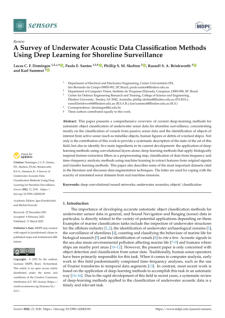

Authors: Rachel D. Moseley, Justyna J. Hampel, Rachel L.
Mugge and Leila J. Hamdan
This study investigates the impact of historic wooden-hulled
shipwrecks on the dispersal of wood-colonizing microbial
biofilms in the deep sea. Two historic shipwrecks in the
northern Gulf of Mexico were studied, using two
experimental microbial recruitment arrays containing pine
and oak samples. The results showed that wood type was
the most significant factor shaping bacterial composition,
but not archaeal or fungal composition, and that proximity
to shipwrecks also had a significant influence on bacterial
and archaeal composition and alpha diversity, but not on
fungal communities.



Author: Artur Grzadzie
This article presents the results of remote sensing surveys at
a newly discovered wreck site in the Baltic Sea, Poland.
Remote sensing techniques provide a detailed overview of
the wreckage area, reducing ground truthing time. The
findings, combined with archival documentation, allowed
for the identification of a Junkers Ju-88, a World War II
bomber.



Authors: Christian Bräuer-Burchardt, Christoph Munkelt,
Michael Bleier, Matthias Heinze, Ingo Gebhart,
Peter Kühmstedt, and Gunther Notni
This study introduces a 3D scanning system for underwater
archeological sites and shipwrecks, utilizing structured
illumination for cultural heritage documentation and
measurement tasks. It includes monochrome cameras, a
projection unit, flashlights, a color camera, an inertial
measurement unit, and an electronic control box. It can be
used for topographic documentation and generating
detailed 3D models, including texture and color information
for underwater objects.



Authors: Philip A. Hartmeyer, Jeremy Weirich, Hans Van
Tilburg, Adrienne Copeland, Mashkoor Malik, Frank
Cantelas, Sam Cuellar, Kelley Suhre, Kasey Cantwell
This article discusses the National Oceanic and Atmospheric
Administration's (NOAA) plans for ocean exploration in the
Pacific Basin from 2024 to 2026. The focus of these
operations is on community-driven exploration, emphasizing
the involvement of local communities and stakeholders in
the exploration process.

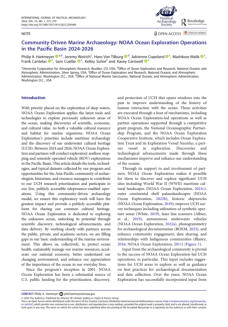

Authors: Alessio Calantropio, and Filiberto Chiabrando
Underwater cultural heritage (UCH) is a valuable resource
that requires preservation, documentation, and
safeguarding. Advanced technologies like underwater
photogrammetry are crucial for UCH documentation,
providing high-resolution 3D models and 2D orthomosaics.
However, challenges like water optical properties, light
penetration, visibility, radiometric issues, and environmental
drawbacks make it difficult. This paper discusses recent
applications of photogrammetric techniques for UCH
documentation.

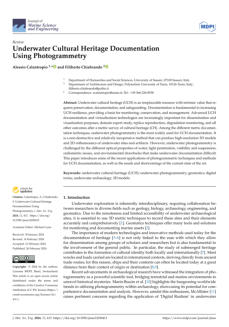

Authors: Bengin Bilici Genc, Erkan Bostanci, Bekir Eskici,
Hakan Erten, Berna Caglar Eryurt, Koray Acici,
Didem Ketenoglu, and Tunc Asuroglu
This study aims to develop a non-destructive, cost-
minimizing, and easy-to-use analysis method for cultural
assets. The method uses four primary colors (red, yellow,
green, Egyptian blue, and ultramarine blue) and is trained
on various models. The trained VGG19 model can classify
paintings in archaeological and artistic works with their real
identities, with a 99% success rate, similar to the McNemar
test. This approach is designed to address the challenges
faced by cultural heritage workers in understanding these
assets without sampling.

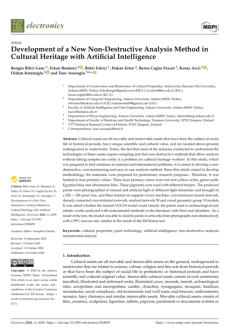

Authors: Salvatore Medaglia, Fabio Bruno, Ana Castelli,
Matteo Collina, Barbara Davidde Petriaggi, Luca De
Rosa, Julieta Frere, Fabrizio Fuoco, Guillermo
Gutiérrez, Antonio Lagudi, Francesco Megna, and
Raffaele Peluso
SS Bengala, a steamer that sank in 1889 near Capo Rizzuto,
Italy, played a significant role in the development of Italy's
merchant navy. Despite its brief service life, no iconographic
material has been found to depict the ship. Researchers
have created a virtual reconstruction using archival sources
and underwater surveys. The 3D modelling of the ship's
external hull, based on geometric data from the wreck site,
offers a first step towards virtual reconstruction. The model
can be used in augmented reality applications and museum
exhibits.

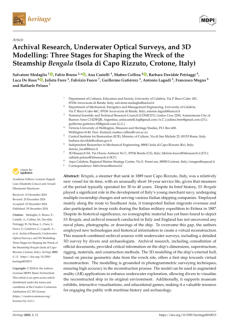

Authors: C. Ferrero-Martín, A. Izquierdo, M. Bethencourt,
and T. Fernández-Montblanc
This study presents a new methodology to assess climate
change's impacts on underwater cultural heritage (UCH)
preservation in shallow waters. It focuses on wave-induced
hazards like decontextualization, scouring, and wear
erosion, and was applied in the Bay of Cadiz, revealing local
increases in wave energy flux in rocky outcrops and coastal
areas with high UCH density. The authors conclude that this
method is essential for identifying high-risk areas and
evaluating UCH preservation under future climate
conditions.

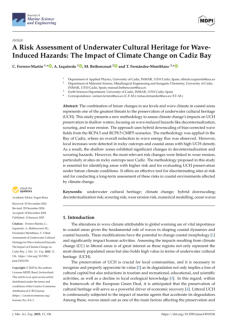

Authors: Eleni Diamanti, Vasili Mentogiannis, Oyvind
Odegard, Georges Koutsouflakis
This paper explores the use of underwater drones in
underwater archaeological mapping, highlighting their
portability, maneuverability, and semi-autonomous mapping
capabilities. It presents two case studies from the Phournoi
archipelago in Greece, demonstrating their effectiveness in
photogrammetric mapping of a Late Roman shipwreck and
large-scale surveying of a historically significant anchorage
site, highlighting their potential to revolutionize underwater
archaeological documentation.

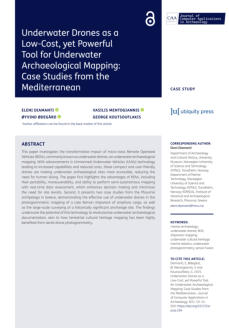

Author: Laurent Urios
Metallic shipwrecks, historically significant marine sites, are
facing degradation due to microorganisms. This review aims
to understand the relationship between bacteria and
metallic shipwrecks, highlighting the need for
multidisciplinary studies to protect the environment and
underwater cultural and natural heritage sites.

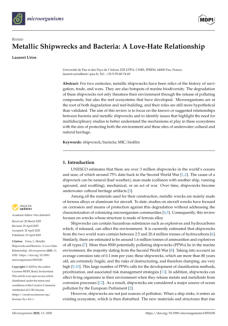

Author: Deanna Groom
This research explores the impacts of climate change on
historic shipwrecks in Wales, identifying suitable sites
through baseline surveys and 3D digital photogrammetry.
Results show warmer water species are expanding their
range northwards, while Welsh shipwreck biodiversity has
decreased by 7% in the past 30 years. This study contributes
to a nationwide review of climate emergency changes and
suggests international research and policy actions to protect
underwater and intertidal shipwrecks.


Authors: Stella Sofi a Kyvelou, Nektaria Marava, and Dimitrios
G. Ierapetritis
This paper explores the role of maritime cultural heritage
(MUCH) in innovative specialization strategies and
sustainable growth, particularly in the context of the blue
economy in Europe. It focuses on the Greek context, where
soft multi-use activities combining UCH, diving tourism, and
nature conservation are gaining momentum. The
researchers recommend using maritime spatial planning to
address challenges and promote a sustainable blue
economy by balancing cultural, ecological, social, and
economic goals.

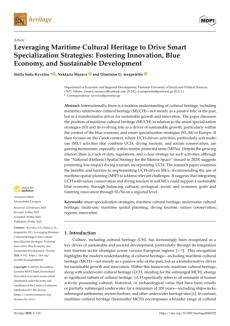
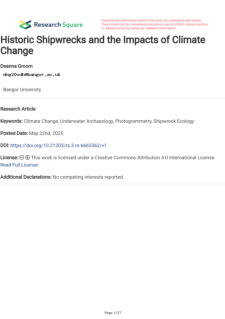

Authors: C. Balletti, C. Beltrame, E. Costa, F. Guerra, P.
Vernier
Underwater surveys require specific techniques different
from land archaeology due to the challenges of using active
3D sensors. Researchers from Ca' Foscari University and
University IUAV of Venice have been testing integrated
techniques, finding that multi-image digital
photogrammetry effectively supports underwater
archaeology. This method yields high-quality 3D models
and 2D representations. The paper discusses the integrated
survey of two Roman shipwrecks, detailing topographic
survey approaches based on site characteristics. Results
include 3D models useful for various analyses and public
documentation.



Authors: Ervan G. Garrison, Matthew A. Newton, Benjamin
Prueitt, Emily Carter Jones, and Debra A. Willard
A buried paleosol was discovered on the continental shelf
during a study of sea floor scour, containing tree stumps,
root systems, and fossil animal bone. Radiocarbon dating of
wood samples revealed ages of 42,015–43,417 calibrated
years before present. The site was identified as a freshwater
forested wetland with Taxodium distichum as the keystone
tree species. The preserved soil is classified as an Aquult, a
sub-order of Ultisols.

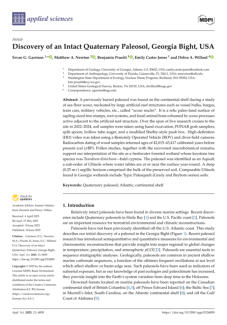

Authors: Jingsheng Li, Yuanbing Ouyang, Hao Wang, Di
Wu, and Yushan Pan
DeepSeaNet is a novel underwater image enhancement
and object recognition method that overcomes challenges
like low light, color distortion, and reduced contrast in
underwater environments. It improves image clarity, color
richness, and contrast by 20–40% over baseline methods.

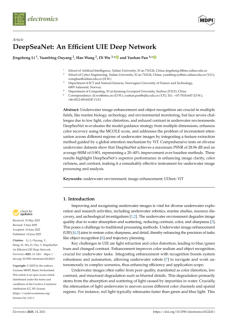

Authors: Ashley Lemke, and Mark Freeland
The North American Great Lakes provide a dynamic case
study of inundated cultural landscapes, influenced by settler
colonialism and invasive power dynamics. Indigenous
communities are interested in these inundated landscapes,
but ethical considerations are needed. Researchers should
consider settler colonialism as a methodology of
understanding, providing an ethical starting point for
working with Indigenous communities and inundated
landscapes. This approach ensures a balance between
Indigenous knowledge and archaeological research.

